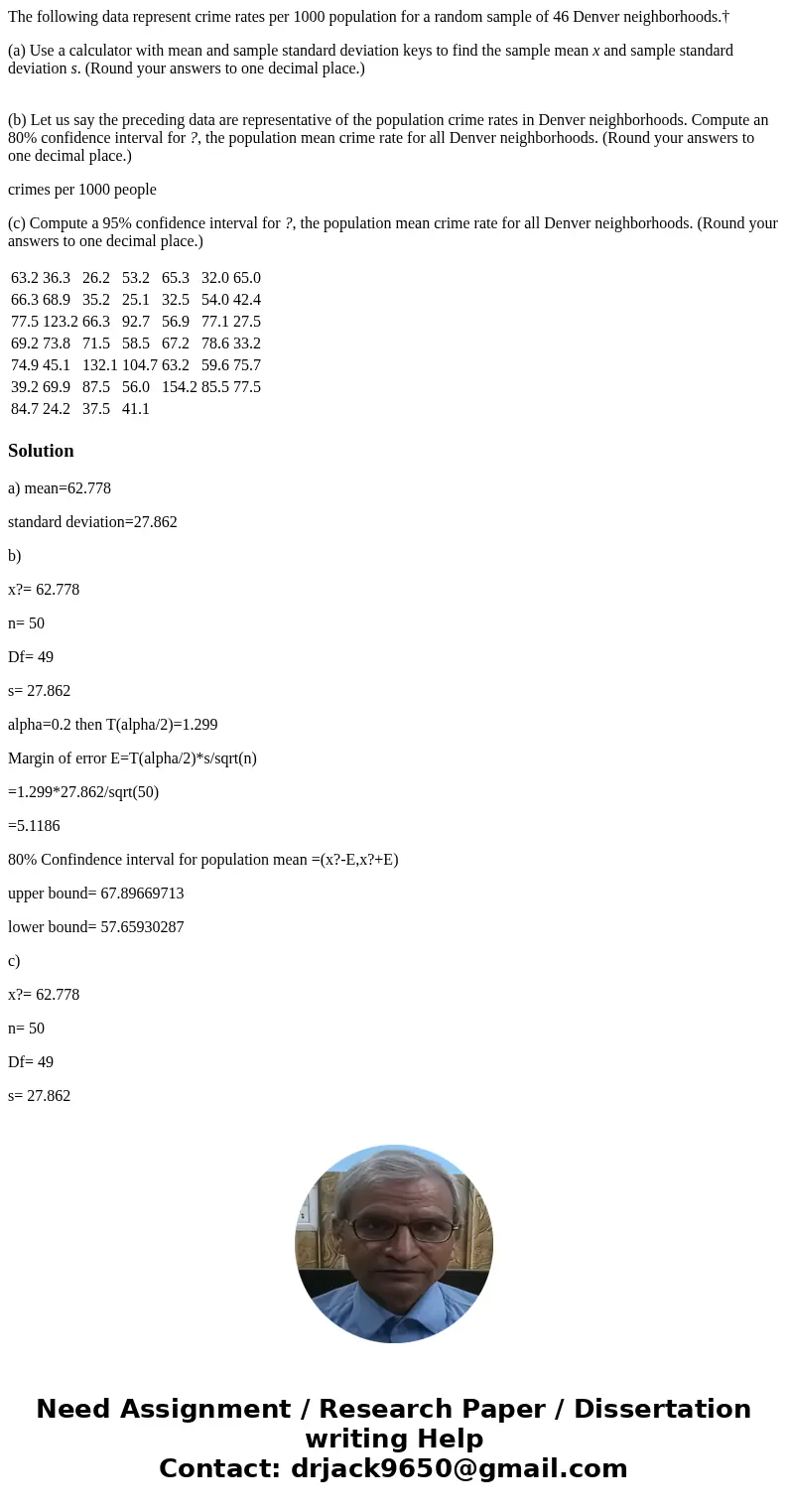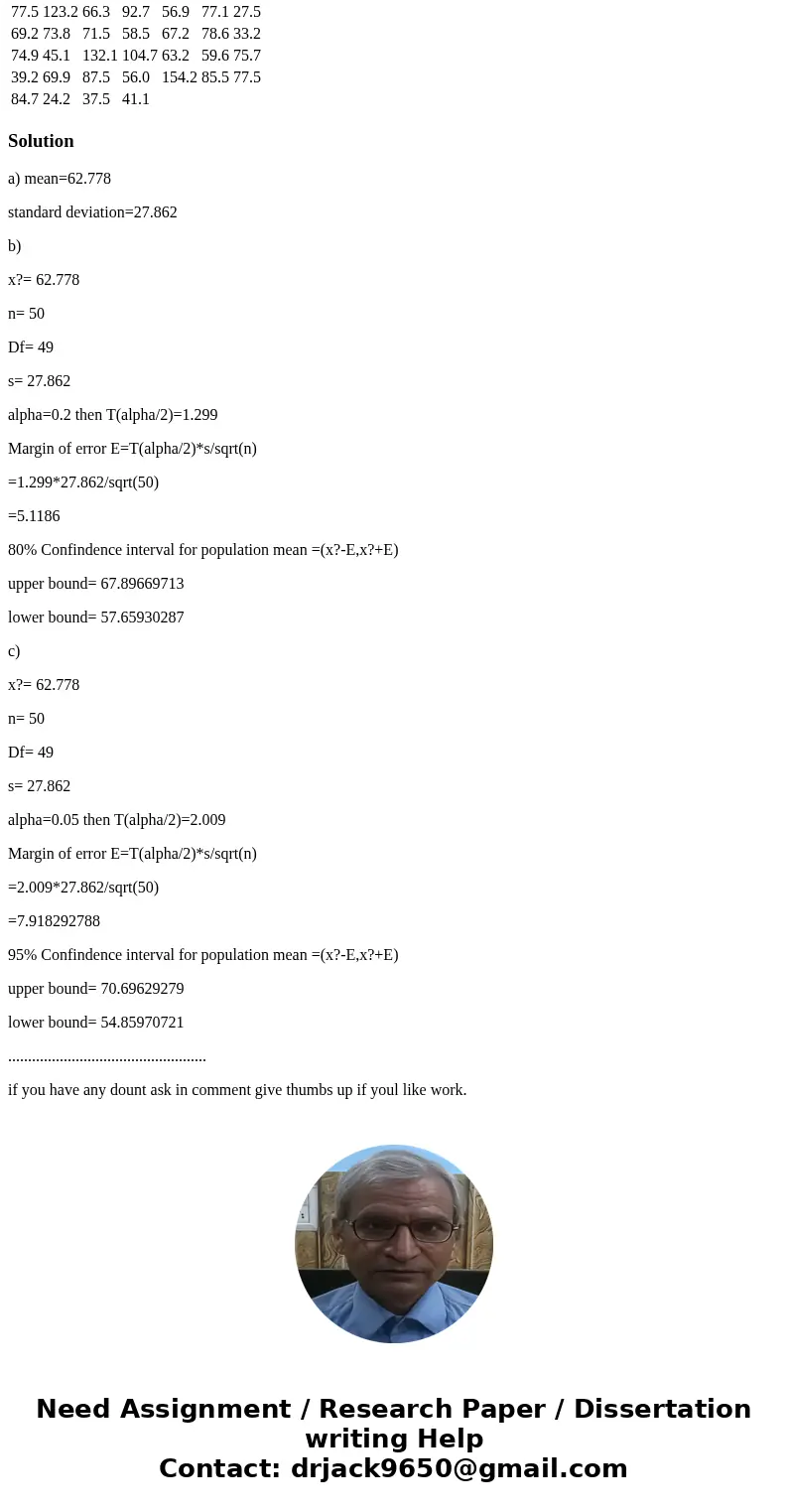The following data represent crime rates per 1000 population
The following data represent crime rates per 1000 population for a random sample of 46 Denver neighborhoods.†
(a) Use a calculator with mean and sample standard deviation keys to find the sample mean x and sample standard deviation s. (Round your answers to one decimal place.)
(b) Let us say the preceding data are representative of the population crime rates in Denver neighborhoods. Compute an 80% confidence interval for ?, the population mean crime rate for all Denver neighborhoods. (Round your answers to one decimal place.)
crimes per 1000 people
(c) Compute a 95% confidence interval for ?, the population mean crime rate for all Denver neighborhoods. (Round your answers to one decimal place.)
| 63.2 | 36.3 | 26.2 | 53.2 | 65.3 | 32.0 | 65.0 |
| 66.3 | 68.9 | 35.2 | 25.1 | 32.5 | 54.0 | 42.4 |
| 77.5 | 123.2 | 66.3 | 92.7 | 56.9 | 77.1 | 27.5 |
| 69.2 | 73.8 | 71.5 | 58.5 | 67.2 | 78.6 | 33.2 |
| 74.9 | 45.1 | 132.1 | 104.7 | 63.2 | 59.6 | 75.7 |
| 39.2 | 69.9 | 87.5 | 56.0 | 154.2 | 85.5 | 77.5 |
| 84.7 | 24.2 | 37.5 | 41.1 |
Solution
a) mean=62.778
standard deviation=27.862
b)
x?= 62.778
n= 50
Df= 49
s= 27.862
alpha=0.2 then T(alpha/2)=1.299
Margin of error E=T(alpha/2)*s/sqrt(n)
=1.299*27.862/sqrt(50)
=5.1186
80% Confindence interval for population mean =(x?-E,x?+E)
upper bound= 67.89669713
lower bound= 57.65930287
c)
x?= 62.778
n= 50
Df= 49
s= 27.862
alpha=0.05 then T(alpha/2)=2.009
Margin of error E=T(alpha/2)*s/sqrt(n)
=2.009*27.862/sqrt(50)
=7.918292788
95% Confindence interval for population mean =(x?-E,x?+E)
upper bound= 70.69629279
lower bound= 54.85970721
..................................................
if you have any dount ask in comment give thumbs up if youl like work.


 Homework Sourse
Homework Sourse